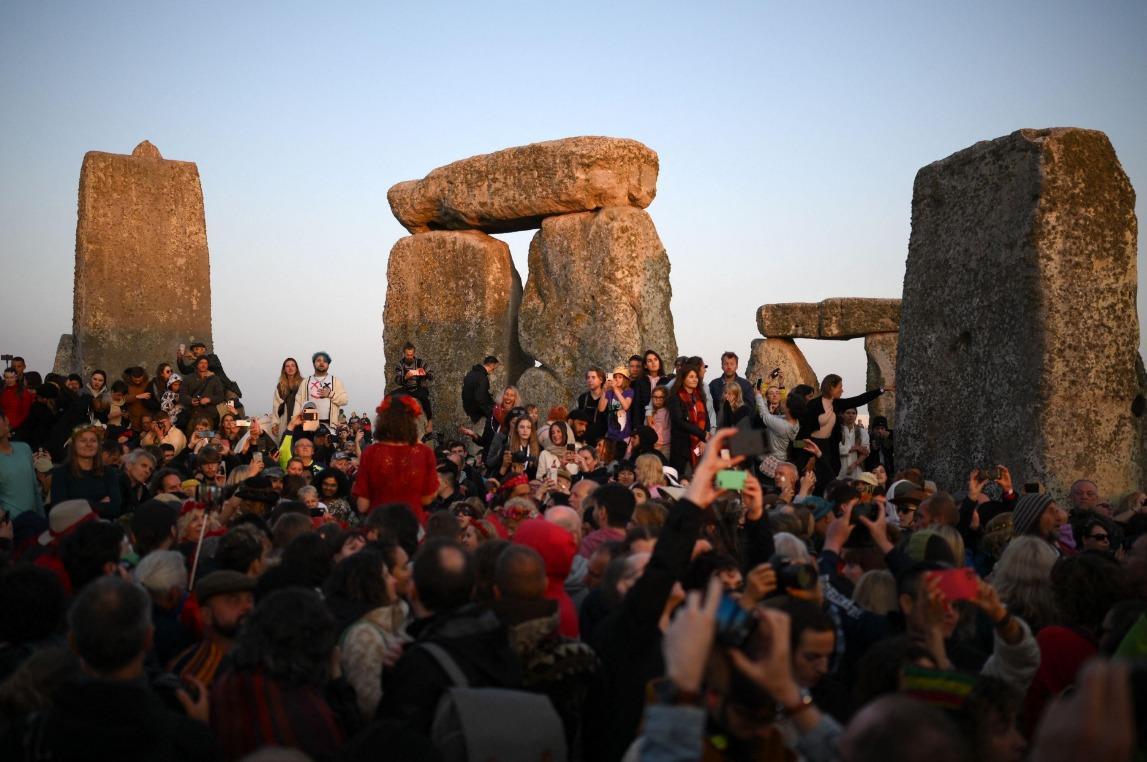
A seemingly curious alliance of druids, pagans, hippies, local residents and tourists gathered around a prehistoric stone circle on a plain in southern England to express their devotion to the sun, or to have some communal fun.
They stayed and celebrated at Stonehenge for the night and greeted sunrise on June 21, the longest day in the Northern Hemisphere.
For druids, modern-day spiritualists linked to the ancient Celtic religious order, Stonehenge has a centuries-long importance, and they will be there to perform dawn rituals around the solstice in their traditional white robes. It's effectively all about the cycle of life, of death and rebirth.
This year, the summer solstice at Stonehenge started at 7 p.m. on June 20 and ran through 8 a.m. on June 21.
The rules have been tightened over the decades, certainly during the coronavirus pandemic. Back in the less-restrained past, tens of thousands would travel by foot, car, bus or motorcycle to worship at the solar temple, or just have a bit of fun.
It's a symbol of British culture and history and remains one of the country’s biggest tourist draws, despite the seemingly permanent traffic jams on the nearby A303 highway, a popular route for motorists traveling to and from the southwest of England.
Stonehenge, one of the world’s most famous prehistoric monuments and a World Heritage Site, was built on the flat lands of Salisbury Plain in stages starting 5,000 years ago, with the unique stone circle erected in the late Neolithic period about 2,500 B.C. Some of the stones, the so-called bluestones, are known to have come from the Preseli Hills in southwest Wales, nearly 240 kilometers away, but the origins of others remain a mystery.
The site’s meaning has been the subject of vigorous debate, with some theories seemingly more outlandish, if not alien, than others.
After all, the stones match perfectly with the sun at both the summer and winter solstices. On the summer solstice, the sun rises behind the Heel Stone in the northeast part of the horizon and its first rays shine into the heart of the stone circle. When the sky is clear, those rays are a triumphant spectacle to behold.